




Separate trails in the same corridor provide for different activities.
by Stuart Macdonald, Trail Consultant, American Trails
In many urban trail corridors the sheer amount of use creates some difficulties for sharing the trail. Wider trails are one solution. But how wide do you want to make the trail? And does a single surface material satisfy all trail users? In many cases, the better solution is to provide two or even three pathways or trail treads with different surfaces. Other treatments seek to make the separation of treads more clear. The two treads may be adjacent or some distance away. The secondary tread may even be an informal path made by mountain bicyclists or horse riders. Signs or pavement markings may also be provided to clarify the separation.
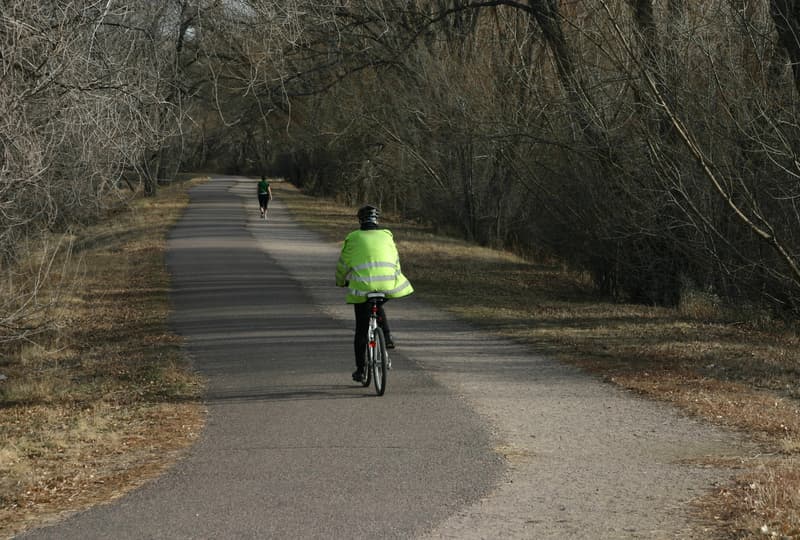
Adjoining treads, one hard surface and one soft, is the typical situation; Highline Canal Trail, Aurora, Colorado
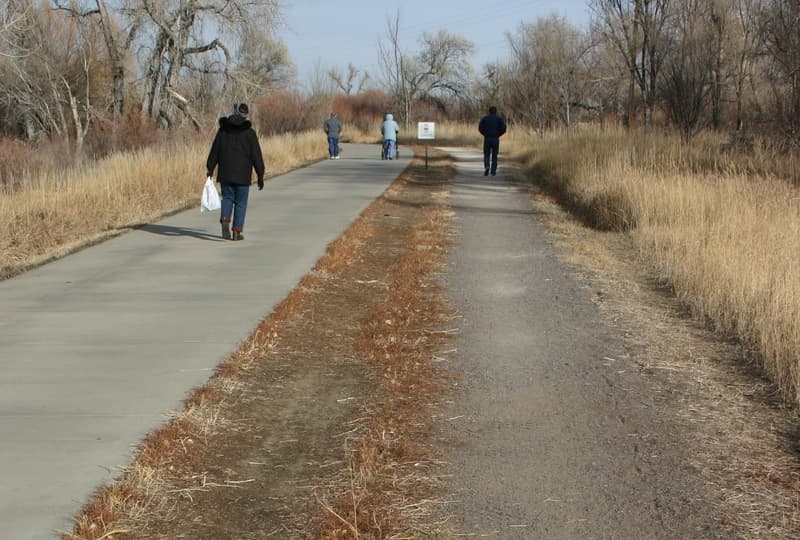
Slight separation between the adjoining treads, one concrete and the other natural surface often used by equestrians; Crown Hill Park trails in Wheat Ridge, Colorado
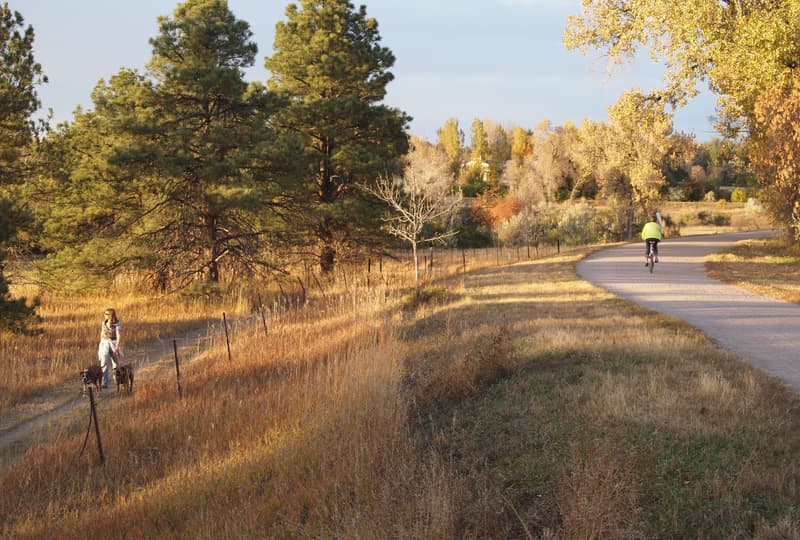
The paved trail is on the canal embankment while the unpaved tread is at the edge of the corridor; Highline Canal Trail, Greenwood Village, Colorado
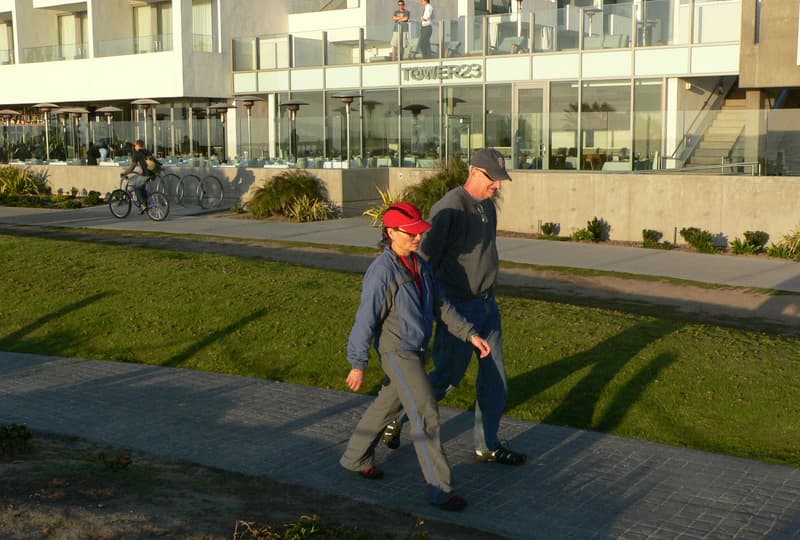
Patterned concrete marks the walking trail while the bike trail is asphalt; Pacific Beach, San Diego
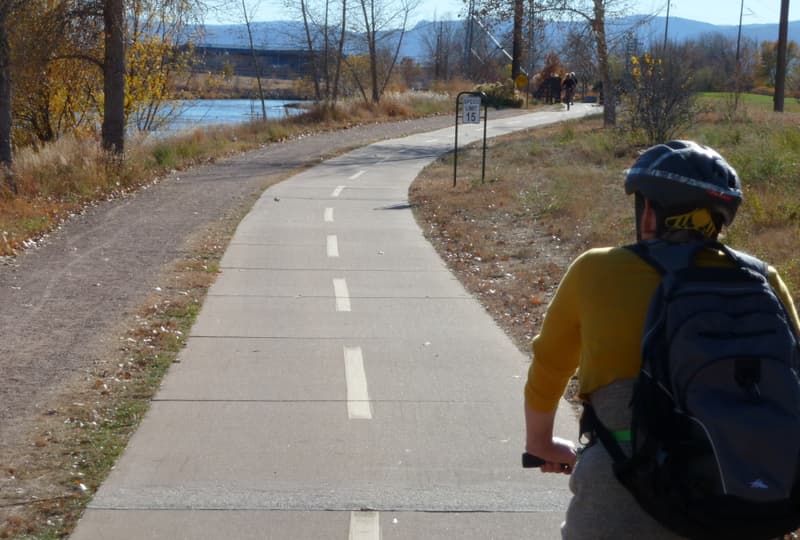
Crusher fines trail marked for pedestrians along Mary Carter Greenway by the Platte River, South Suburban Park District, Colorado
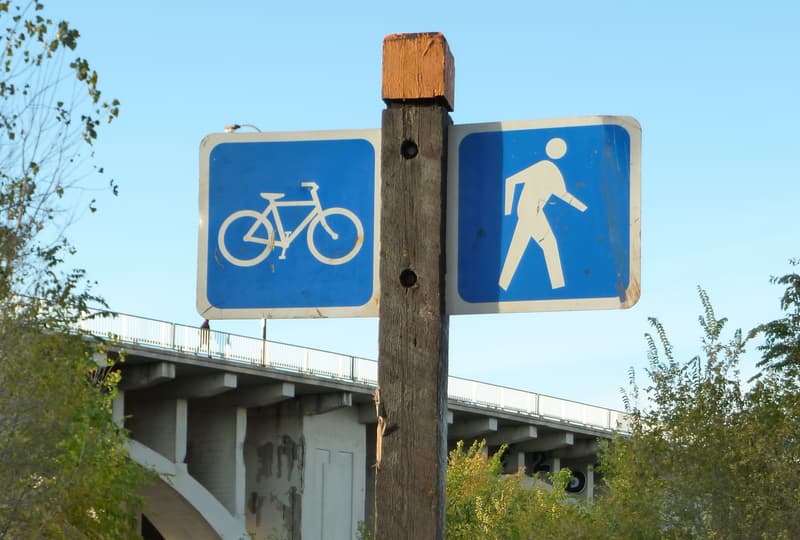
Signs between the bicycle and pedestrian routes on separated bicycle and pedestrian routes, both paved, along West River Parkway, Minneapolis
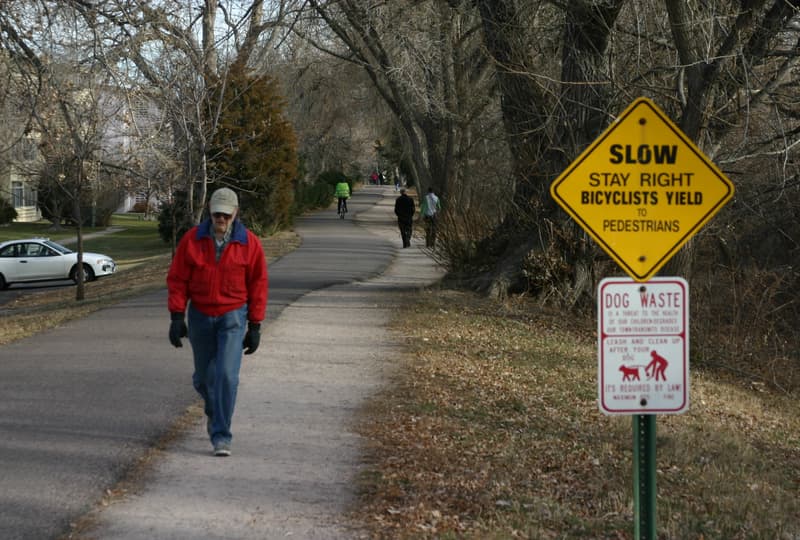
Adjoining treads, one hard surface and one soft, is the typical situation; Highline Canal Trail, Aurora, Colorado; December 2010
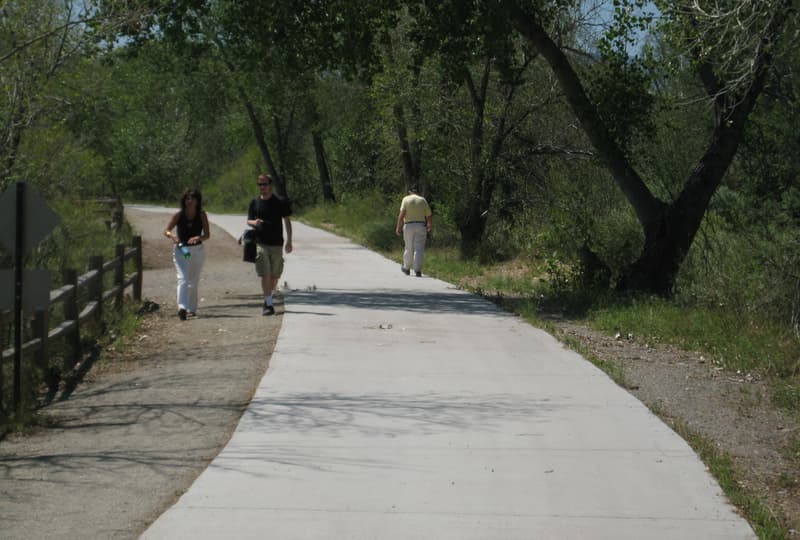
Crushed rock trail adjacent to concrete greenway; Clear Creek National Recreation Trail, Wheat Ridge, Colorado
American Hiking Society National Trails Day® Event Host Guide (2023)
posted Apr 16, 2024
This guide will provide you with the following resources and knowledge you need to plan and promote a successful event for National Trails Day®.
League of American Bicyclists National Bike Month Guide (2023)
posted Apr 16, 2024
May is National Bike Month, sponsored by the League of American Bicyclists, and celebrated in communities from coast to coast. This step-by-step guide will help you in creating a successful Bike Month event in your community, workplace, city or state.
Making Transportation Planning Applicable in Tribal Communities Research Study: Final Report
posted Dec 20, 2023
The Federal Highway Administration’s (FHWA) Office of Tribal Transportation (OTT) planning staff have observed two challenges in Tribal transportation planning: (1) that existing planning analysis tools do not always align with Tribal community context and needs and (2) it is not always clear what benefits planning provides to transportation project selection and delivery in Tribal communities.
posted Dec 20, 2023
This report and its appendices constitute a review of law, policy, and procedures, with recommendations for changes based on Tribal consultation and public comments.
2,092 views • posted 10/03/2019